使用Matlab對信號進行頻域分析的方法
Matlab可以說是一個非常有用且功能齊全的工具,在通信、自控、金融等方面有廣泛的應用。
本文引用地址:http://www.104case.com/article/201808/391336.htm說到頻域,不可避免的會提到傅里葉變換,傅里葉變換提供了一個將信號從時域轉變到頻域的方法。之所以要有信號的頻域分析,是因為很多信號在時域不明顯的特征可以在頻域下得到很好的展現,可以更加容易的進行分析和處理。
FFT
Matlab提供的傅里葉變換的函數是FFT,中文名叫做快速傅里葉變換。快速傅里葉變換的提出是偉大的,使得處理器處理數字信號的能力大大提升,也使我們生活向數字化邁了一大步。
接下來就談談如何使用這個函數。
fft使用很簡單,但是一般信號都有x和y兩個向量,而fft只會處理y向量,所以想讓頻域分析變得有意義,那么就需要用戶自己處理x向量
一個簡單的例子
從一個簡單正弦信號開始吧,正弦信號定義為:
我們現在通過以下代碼在Matlab中畫出這個正弦曲線
fo = 4; %frequency of the sine wave
Fs = 100; %sampling rate
Ts = 1/Fs; %sampling time interval
t = 0:Ts:1-Ts; %sampling period
n = length(t); %number of samples
y = 2*sin(2*pi*fo*t); %the sine curve
%plot the cosine curve in the time domain
sinePlot = figure;
plot(t,y)
xlabel('time (seconds)')
ylabel('y(t)')
title('Sample Sine Wave')
grid
這就是我們得到的:
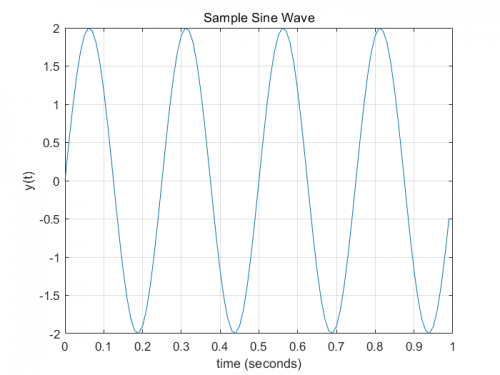
當我們對這條曲線fft時,我們希望在頻域得到以下頻譜(基于傅里葉變換理論,我們希望看見一個幅值為1的峰值在-4Hz處,另一個在+4Hz處)
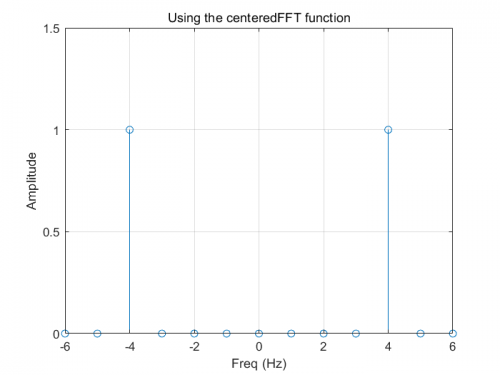
使用FFT命令
我們知道目標是什么了,那么現在使用Matlab的內建的FFT函數來重新生成頻譜
%plot the frequency spectrum using the MATLAB fft command
matlabFFT = figure; %create a new figure
YfreqDomain = fft(y); %take the fft of our sin wave, y(t)
stem(abs(YfreqDomain)); %use abs command to get the magnitude
%similary, we would use angle command to get the phase plot!
%we'll discuss phase in another post though!
xlabel('Sample Number')
ylabel('Amplitude')
title('Using the Matlab fft command')
grid
axis([0,100,0,120])
效果如下:
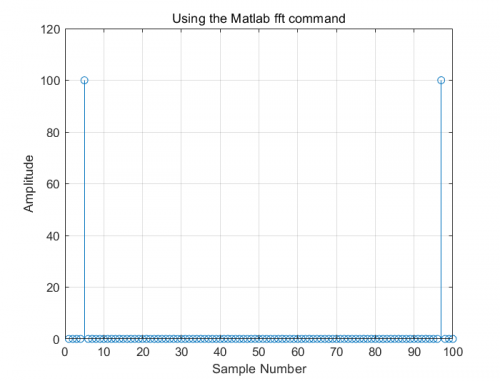
但是注意一下,這并不是我們真正想要的,有一些信息是缺失的
x軸本來應該給我們提供頻率信息,但是你能讀出頻率嗎?
幅度都是100
沒有讓頻譜中心為
為FFT定義一個函數來獲取雙邊頻譜
以下代碼可以簡化獲取雙邊頻譜的過程,復制并保存到你的.m文件中
function [X,freq]=centeredFFT(x,Fs)
%this is a custom function that helps in plotting the two-sided spectrum
%x is the signal that is to be transformed
%Fs is the sampling rate
N=length(x);
%this part of the code generates that frequency axis
if mod(N,2)==0
k=-N/2:N/2-1; % N even
else
k=-(N-1)/2:(N-1)/2; % N odd
end
T=N/Fs;
freq=k/T; %the frequency axis
%takes the fft of the signal, and adjusts the amplitude accordingly
X=fft(x)/N; % normalize the data
X=fftshift(X); %shifts the fft data so that it is centered
這個函數輸出正確的頻域范圍和變換后的信號,它需要輸入需要變換的信號和采樣率。
接下來使用前文的正弦信號做一個簡單的示例,注意你的示例.m文件要和centeredFFT.m文件在一個目錄下
[YfreqDomain,frequencyRange] = centeredFFT(y,Fs);
centeredFFT = figure;
%remember to take the abs of YfreqDomain to get the magnitude!
stem(frequencyRange,abs(YfreqDomain));
xlabel('Freq (Hz)')
ylabel('Amplitude')
title('Using the centeredFFT function')
grid
axis([-6,6,0,1.5])
效果如下:
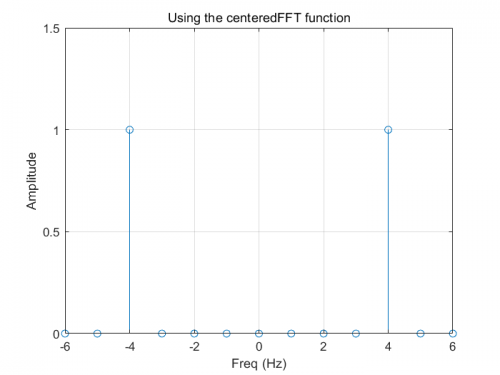
這張圖就滿足了我們的需求,我們得到了在+4和-4處的峰值,而且幅值為1.
為FFT定義一個函數來獲取右邊頻譜
從上圖可以看出,FFT變換得到的頻譜是左右對稱的,因此,我們只需要其中一邊就能獲得信號的所有信息,我們一般保留正頻率一側。
以下的函數對上面的自定義函數做了一些修改,讓它可以幫助我們只畫出信號的正頻率一側
function [X,freq]=positiveFFT(x,Fs)
N=length(x); %get the number of points
k=0:N-1; %create a vector from 0 to N-1
T=N/Fs; %get the frequency interval
freq=k/T; %create the frequency range
X=fft(x)/N; % normalize the data
%only want the first half of the FFT, since it is redundant
cutOff = ceil(N/2);
%take only the first half of the spectrum
X = X(1:cutOff);
freq = freq(1:cutOff);
和前面一樣,使用正弦信號做一個示例,下面是示例代碼
[YfreqDomain,frequencyRange] = positiveFFT(y,Fs);
positiveFFT = figure;
stem(frequencyRange,abs(YfreqDomain));
set(positiveFFT,'Position',[500,500,500,300])
xlabel('Freq (Hz)')
ylabel('Amplitude')
title('Using the positiveFFT function')
grid
axis([0,20,0,1.5])
效果如下:
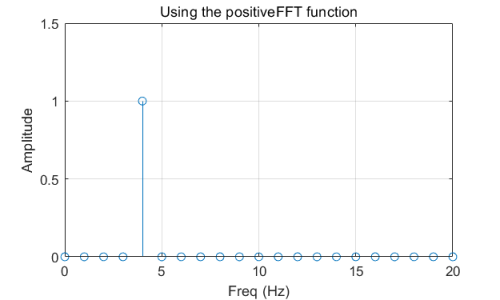





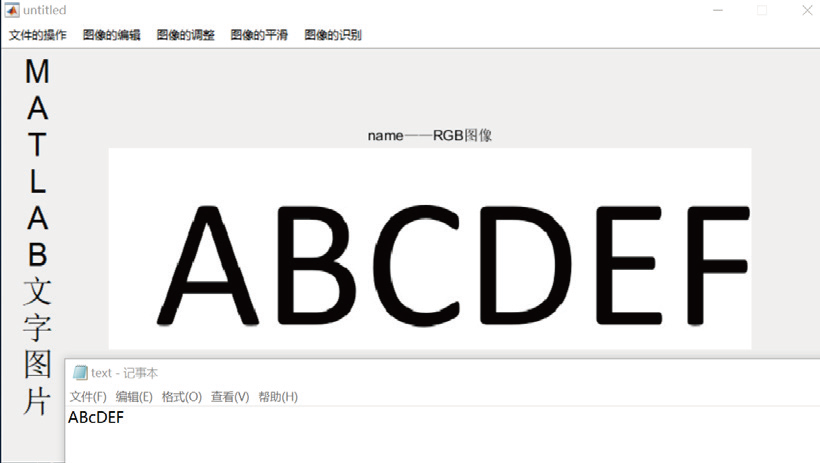







評論